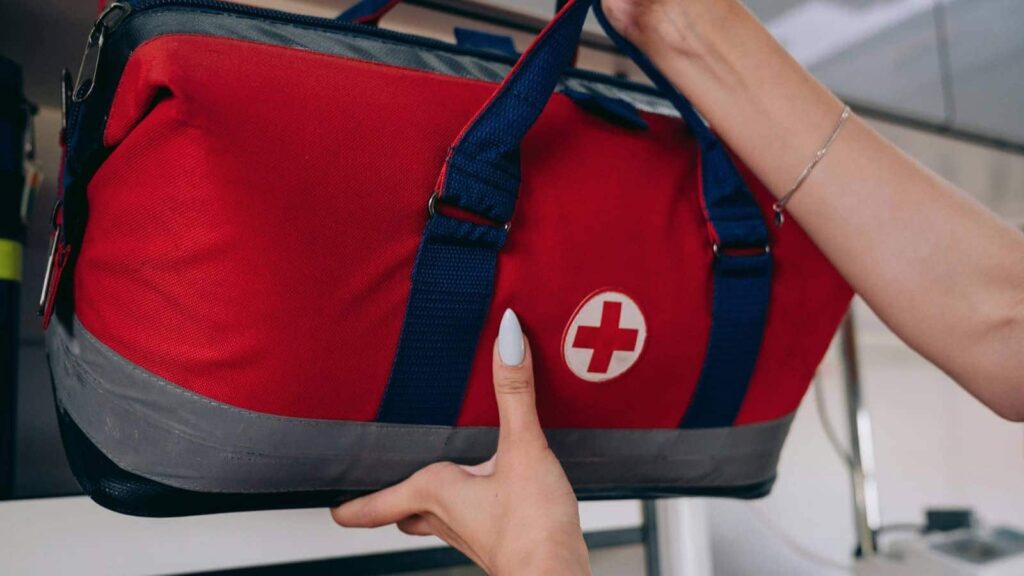10 Unbelievable American Health Practices in the U.S.
10 Unbelievable American Health Practices in the U.S.

When people from other countries visit or move to the U.S., they often find the healthcare system quite puzzling. From the heavy reliance on private health insurance to the complex billing procedures, the American healthcare system is full of practices that are not common elsewhere.
This guide explores 10 such practices that tend to surprise foreigners, offering a glimpse into how healthcare works in the United States and highlighting the differences from systems in other parts of the world. These might also help you if you’re planning a trip to the USA in the near future!
1. Private Health Insurance

In the U.S., private health insurance is a cornerstone of the healthcare system, unlike many countries that have public healthcare systems. For many coming from places with universal coverage, the idea that health insurance is primarily obtained through private companies can be quite a shock.
In the U.S., individuals often receive health insurance as a benefit through their employers, while others might purchase it privately. This reliance on private health insurance leads to variability in the quality of care, coverage, and costs, which is often confusing for those used to a more uniform public health system.
2. High Medical Costs

The costs associated with healthcare in the U.S. are famously high. From routine doctor’s visits to complex surgeries and long hospital stays, the bills can be staggeringly expensive.
Foreigners are particularly surprised by such costs, especially those from countries where healthcare pricing is heavily regulated and typically much lower. The high costs are partly due to the lack of price regulation, the complex insurance landscape, and the high standards of medical facilities and technology available in the U.S.
3. Prescription Drug Ads

In the United States, it’s common to see advertisements for prescription drugs on TV—an oddity for visitors from abroad. These ads often promote medications directly to consumers, encouraging them to ask their doctors about specific drugs.
This practice is banned or highly regulated in most other countries, where medications are seen strictly as a matter of professional healthcare advice, not consumer choice influenced by advertising.
4. Doctor Shopping

The concept of “doctor shopping” or switching doctors until finding one that best suits a patient’s needs and preferences is another aspect of American healthcare that confuses foreigners.
In many countries with more centralized healthcare systems, patients are often assigned a doctor or have limited choices. This freedom to choose and change doctors in the U.S. reflects the consumer-oriented nature of many American services, including healthcare.
5. Co-Payments and Deductibles

The idea of co-payments and deductibles is another feature of the U.S. healthcare system that often puzzles those from abroad. In addition to paying insurance premiums, Americans must often pay a fixed amount (co-payment) or a deductible before their insurance covers the rest of their medical expenses.
This system can add an additional layer of financial burden and complexity, especially for those not used to managing such out-of-pocket expenses.
6. Urgent Care Centers

Urgent care centers provide non-emergency medical services and are a staple in the U.S. healthcare landscape. They offer a convenient alternative to hospital emergency rooms for less serious health issues, and they are typically easier to access and cheaper.
This widespread use of urgent care centers is relatively unique to the U.S. and can be unexpected for foreigners accustomed to different protocols for non-emergency care.
7. Specialist Referrals

In the U.S., patients often need a referral from their primary care doctor to see a specialist. This gatekeeping role of primary care physicians is less common in many other healthcare systems, where patients might go directly to specialist care without needing a referral.
This referral requirement can be seen as an extra step and sometimes a barrier to accessing specialized care quickly.
Small Town Life: 15 Habits Americans Don’t Realize Are Weird For Foreigners
8. Medical Billing Complexity

The complexity of medical billing in the U.S. is notorious and often baffling for foreigners. After receiving healthcare services, patients might receive multiple bills from the hospital, doctors, and labs. Additionally, dealing with insurance claims can add another layer of complexity, as patients navigate what their insurance covers and what additional payments they must make.
9. Health Savings Accounts

Health Savings Accounts (HSAs) are another uniquely American feature. These accounts allow people to save money tax-free to pay for medical expenses. They are linked to high-deductible health plans and can be a useful financial tool, but the concept and management of HSAs can be confusing for those from countries with more direct healthcare funding methods.
10. Annual Physicals

In the U.S., there is a strong emphasis on having an annual physical examination. This routine health check is encouraged regardless of immediate health concerns and is more emphasized than in many other countries, where such exams might not be as routine or heavily promoted.
For foreigners, this practice underscores a proactive approach to healthcare, focusing on prevention and early detection of diseases.
20 US Road Trips That Are Worth Doing Once In Your Life

20 US Road Trips That Are Worth Doing Once In Your Life
10 Most Deadly National Parks In The USA

10 Most Deadly National Parks In The USA
7 US Small Towns That Will Take Your Fall Romance To Another Level

7 US Small Towns That Will Take Your Fall Romance To Another Level
We are Mary and Eric, the founders of Be Right Back, a blog dedicated to romance around the globe and at home.
We are Mary and Eric, the founders of Be Right Back, a blog dedicated to romance around the globe and at home. With over 10 years of experience in dating and traveling to romantic places, we share our favorite date ideas and romantic destinations to help couples level up their relationships. Having lived in and traveled through the USA, we also share our favourite things to do in the States.
With 70,000 monthly readers and 16,000 followers on social media, Be Right Back is your go-to resource for romantic trip ideas and couple activities at home and abroad.
